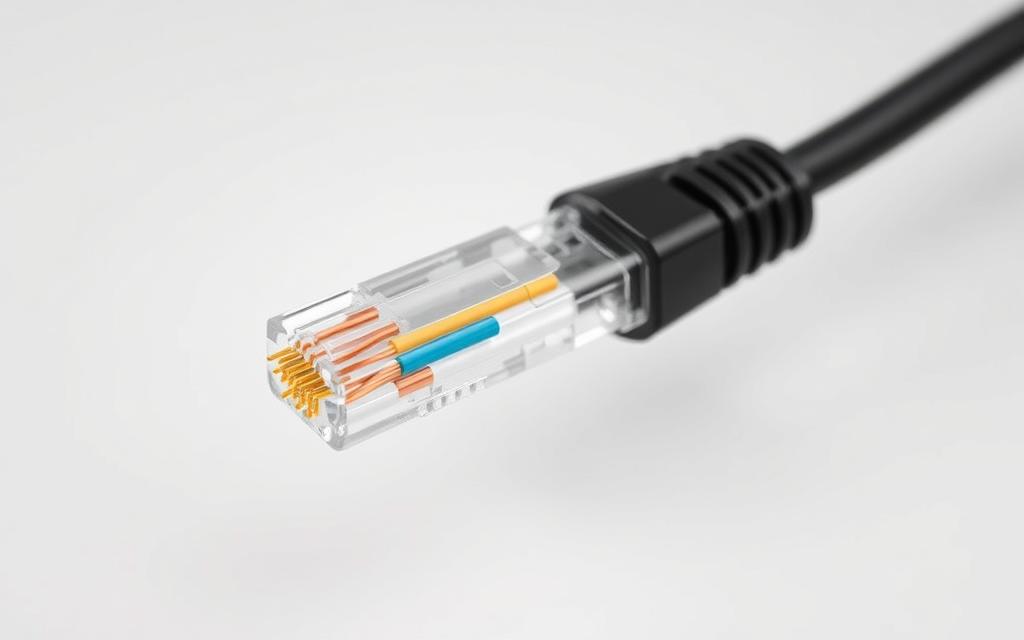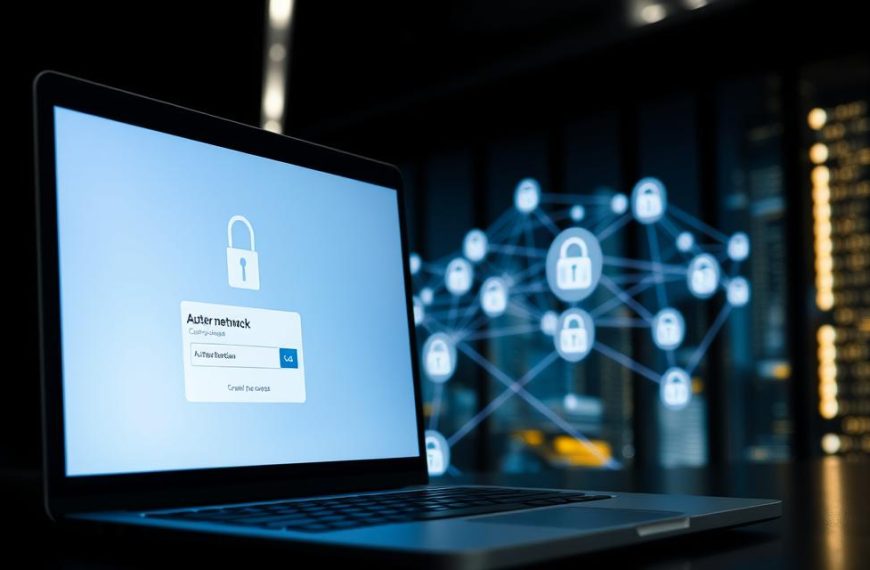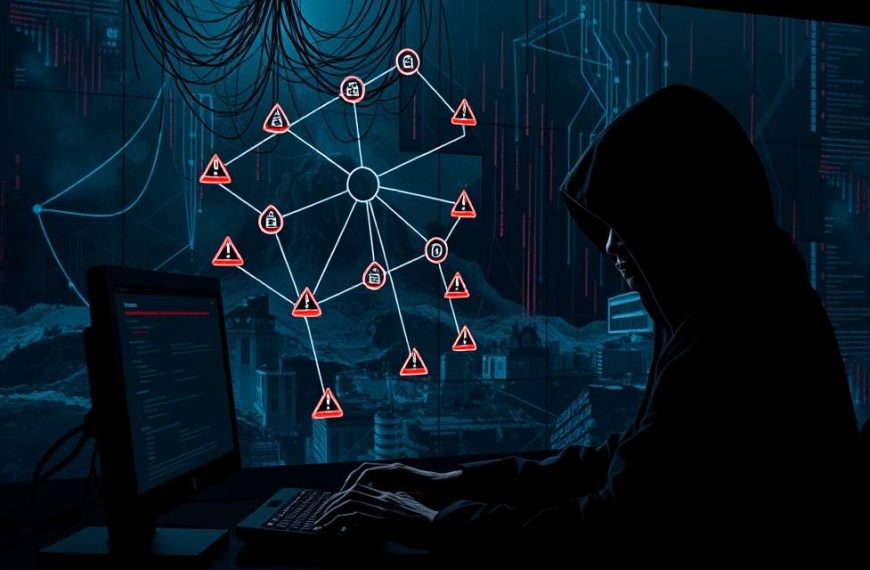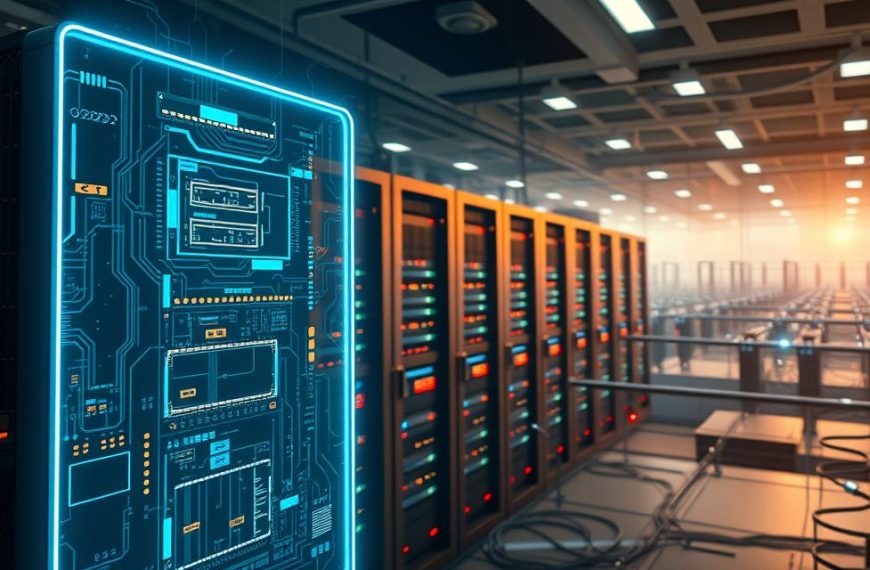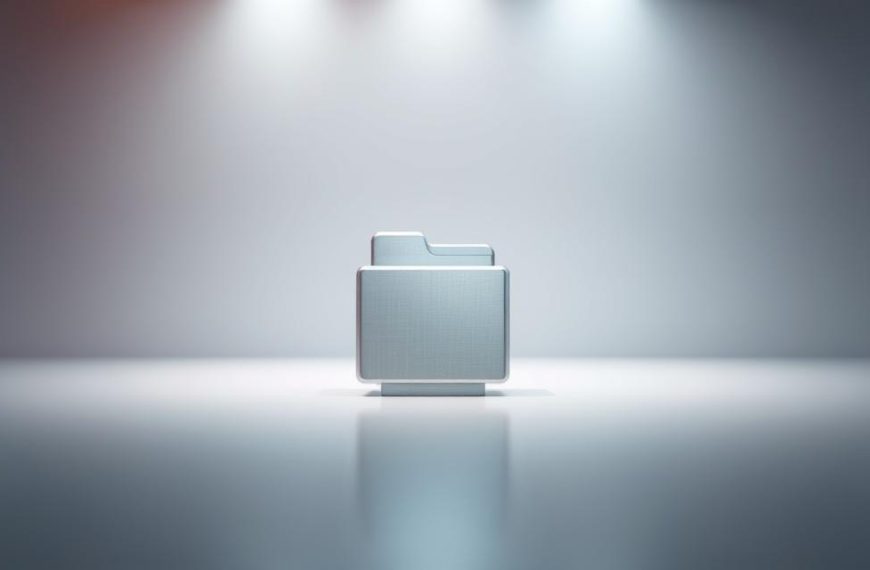Physical cabling solutions started at Xerox PARC in 1973. Bob Metcalfe developed them. These reliable data highways are key to modern digital systems. They offer stable connections for fast work in homes and businesses.
This tech lets devices share information directly. It uses standardised protocols. The wires inside, whether copper or fibre-optic, reduce interference. This makes them vital for tasks needing steady bandwidth.
Streaming 4K video or managing cloud servers shows their importance. They are essential in computer network basics.
Wi-Fi is convenient, but wired setups are better for tasks needing low latency and security. Offices, gaming setups, and data centres use them for smooth performance. Over the years, improvements have made them faster and more durable, staying true to Metcalfe’s vision.
Now, networks mix wireless ease with wired strength. But, physical connections are vital for key systems globally. Their growth shows how some tech stays relevant, even as technology changes fast.
The Essential Role of Ethernet Cables in Networking
Ethernet cables are key to reliable networks, even as wireless tech gets more attention. They offer steady performance where wireless signals fail. This makes them vital for important tasks.
Defining Ethernet Cables in Computer Networks
Ethernet cables carry data between devices with electrical signals. They use twisted pair cables with colour-coded copper wires. This design fights off electromagnetic interference, as Source 2 explains.
Key Components and Physical Characteristics
Four things make Ethernet cables good:
- RJ45 connectors: Gold-plated for strong connections
- Conductor material: Copper that doesn’t lose signal easily
- Shielding types: U/UTP vs F/UTP, as Source 1 says
- Jacket durability: PVC or LSZH for safety
Stranded cores are flexible for patch cables. Solid cores keep signals strong in permanent setups. In noisy places, EMI shielding is very important.
Comparison With Wireless Network Solutions
This table shows why Ethernet beats Wi-Fi in some areas:
| Factor | Ethernet | Wireless |
|---|---|---|
| Latency | <1ms | 15-50ms |
| Interference Resistance | High (shielded cables) | Low |
| Max Throughput | 40Gbps (Cat8) | 9.6Gbps (Wi-Fi 6) |
Source 2’s analysis shows wired connections are better than wireless in busy networks. For tasks like 4K video editing or IoT, this reliability is key.
Types of Ethernet Cables Explained
Choosing the right Ethernet cable is key for a reliable and fast network. This section looks at four main types. We’ll cover their specs and best uses to guide your choices.
Cat5e: The Entry-Level Standard
Cat5e cables are great for simple networks, supporting speeds up to 1Gbps. They have a 100MHz bandwidth and are cost-effective. They’re perfect for home offices and small businesses.
These cables also support PoE compatibility. This means devices like security cameras and VoIP phones can work without extra power.
Cat6: Enhanced Performance for Modern Networks
Cat6 cables offer 10Gbps speeds over 55 metres. They have a 250MHz bandwidth, double that of Cat5e. Their design reduces crosstalk in busy areas.
For longer distances, Cat6a variants maintain 10Gbps speeds up to 100 metres. They’re great for office networks with big file transfers or video calls.
Cat7 and Cat8: Shielded Solutions for Demanding Environments
Cat7 cables are made for tough settings, with individual shielding to block interference. They have a 600MHz bandwidth. Though not TIA-certified, they’re excellent in places like factories or hospitals.
Cat8 goes further, with 40Gbps speeds at 30 metres and 2000MHz bandwidth. They’re designed for data centre server racks. Both use fire-resistant jackets for ceiling installations.
Fibre Optic vs Copper Ethernet Cables
Fibre optics use light to send data, avoiding electrical interference. They’re perfect for long distances. Copper cables are cheaper for short distances and for devices needing PoE.
Industrial sites often use both. Fibre for long links and copper for machinery.
| Category | Max Speed | Bandwidth | Shielding | Use Case |
|---|---|---|---|---|
| Cat5e | 1Gbps | 100MHz | UTP | Home networks |
| Cat6 | 10Gbps | 250MHz | FTP | Office PoE systems |
| Cat7/Cat8 | 10-40Gbps | 600-2000MHz | S/FTP | Data centres |
| Fibre Optic | 100Gbps+ | N/A | N/A | Long-distance links |
How Ethernet Cables Facilitate Data Transmission
While wireless networks get a lot of talk, copper wires are key to modern connectivity. Ethernet cables quietly move data at near-light speeds. Let’s look at how they do it.
The OSI Model and Physical Layer Operation
Ethernet cables work at Layer 1 of the OSI model. They turn digital info into electrical signals. This happens fast.
They use twisted pair designs to keep signals clear. Cat6 cables have tighter twists than Cat5e, cutting down on interference.
Four key things make this work:
- Conductive copper cores carry the electrical currents
- Insulation stops short circuits between wires
- Twisted pair design cuts down on crosstalk
- Outer jacket protects against damage
Understanding RJ45 Connectors and Termination
The familiar RJ45 connectors use T568A or T568B wiring. These colour-coded schemes ensure signals are routed right.
| Pin | T568A | T568B |
|---|---|---|
| 1 | White/Green | White/Orange |
| 2 | Green | Orange |
| 3 | White/Orange | White/Green |
| 6 | Orange | Green |
Stranded vs solid core cables have different uses. Flexible stranded wires are for patch cables, while solid cores are for permanent setups. Proper termination keeps the connection strong.
Signal Integrity and Interference Prevention
Three main ways prevent signal loss:
- Shielding blocks external EMI
- Twisted pair geometry cancels electromagnetic fields
- Quality insulation materials reduce distance loss
For crosstalk reduction, higher category cables have tighter twists. Sometimes, individual pair shielding is used. In industrial settings, double-shielded Cat7 cables work better than standard UTP.
Testing with cable certifiers checks performance. It ensures installations meet ISO/IEC 11801 standards for reliable data transmission.
Choosing the Right Ethernet Cable for Your Network
Choosing the right Ethernet cable is about finding the right mix of performance, environment, and future-proofing. Whether you’re upgrading your office or setting up industrial networks, your choice affects data reliability and costs. Let’s look at four key factors to consider.
Assessing Speed Requirements: 1Gbps vs 10Gbps
It’s important to match your cable to your internet speed. For example, Google Fiber’s 2Gbps service needs Cat6a or higher cables. Here are some tips:
- 1Gbps networks: Cat5e is enough for distances under 100 metres
- 10Gbps systems: Cat6a keeps signals strong up to 100 metres
Businesses using VoIP or 4K video should choose 10Gbps-ready cables. This ensures they can handle heavy data needs.
Environment Considerations: Office vs Industrial Use
In air-conditioned offices, standard UTP cables work well. But, for factories or outdoor use, you need:
- Shielded (STP) cables to fight off electromagnetic interference
- Plenum-rated jackets for safe use in air-handling spaces
- UV-resistant materials for long-term outdoor use
Cost Analysis: Budget vs Premium Options
Copper-clad aluminium (CCA) cables are cheaper but less durable. They also reduce Power over Ethernet (PoE) efficiency. Here’s a comparison:
| Feature | Budget (CCA) | Premium (Pure Copper) |
|---|---|---|
| Max PoE Budget | 25W | 90W |
| Lifespan | 3-5 years | 8-10 years |
| 10Gbps Support | Up to 45m | Up to 100m |
Future-Proofing Your Cable Infrastructure
Cat6a is a great choice for enterprise networking upgrades. It supports 10Gbps speeds and is cost-effective. For data centres or IoT environments, Cat8’s 40Gbps and better shielding are worth the extra cost. Always save 15-20% of your budget for future upgrades.
Installation Best Practices and Maintenance
Setting up a network right is key to keeping it running smoothly for a long time. It also makes sure you follow important safety rules. By sticking to the right cabling standards, you avoid a lot of problems and save money. Here are three main ways to keep your network in top shape.
Proper Cable Routing Techniques
Putting cables in the right place helps avoid problems like interference and damage. Make sure the bend radius is at least four times the cable’s diameter. This stops the cable from getting damaged.
For thin cables like 28AWG, keep runs under 50 metres. Thinner cables have more resistance over longer distances.
Here are some important things to think about when routing cables:
- Keep Ethernet lines at least 30cm away from fluorescent lights or motors.
- Use NEC-compliant CMR-rated jackets in vertical risers.
- Secure bundles with Velcro every 1.5 metres to stop them from sagging.
Testing and Certification Standards
Fluke testing checks if your installation meets TIA/EIA-568 standards. It does this by measuring things like:
| Parameter | Cat6 Requirement | Test Instrument |
|---|---|---|
| Insertion Loss | ≤21.3dB @ 250MHz | Fluke DSX-8000 |
| Return Loss | ≥20.1dB @ 250MHz | Fluke Versiv |
| DC Resistance | ≤7.5Ω per 100m | MicroScanner PoE |
“Certification testing isn’t optional – it’s the only way to prove your infrastructure supports modern applications.”
Troubleshooting Common Connectivity Issues
Dropouts often come from physical problems. Here’s how to fix them:
- Check connectors for any mistakes.
- Make sure PoE heat management in switches isn’t overloaded – ports over 60°C are a problem.
- Use a cable mapper to test continuity.
For issues that come and go, try replacing the cable and testing again. Remember, NEC 725.179 says you need plenum-rated cables in air-handling spaces to keep toxic fumes out during fires.
Building Robust Networks With Purpose-Driven Infrastructure
Ethernet cables are key to reliable networks in today’s data-heavy world. Structured cabling with Cat7 or Cat8 cables beats wireless for fast applications like gaming and 4K streaming. Data centres for AI use Cat8’s 40Gbps speed, following ANSI/TIA-568 standards for the future.
Choosing the right cable is vital for network reliability. Cat5e is okay for simple offices, but Cat6 is better for homes with many 8K devices. For tough environments, durable, shielded cables from Belden or Siemon fight off interference. This stops data loss, a big problem with Wi-Fi.
Planning structured cabling is more than just for now. The 30% buffer rule helps when laying cables in raceways or pathways. Certified installers check cables with Fluke Networks testers to meet ISO/IEC 11801 standards. This step helps avoid future problems.
When deciding between Ethernet and wireless, copper wins for reliability. Wired connections are better for Zoom meetings and NAS file transfers. With internet speeds up to 2Gbps from Google Fiber, using top cables is a must. The right choice now saves money later.

